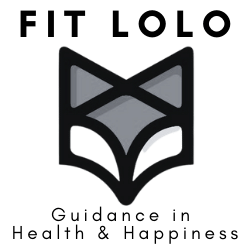200114 - Throwback Thursday - Nutrition "MACROS"
Since we just had our NUTRITION CHALLENGE workshop and it starts on Monday, I thought this was a perfect post to bring back!
Let’s chat macronutrients! These are the three building blocks of our nutrition and can help us build a better understanding/relationship with our food.
CARBOHYDRATES (Carbs) - 4 calories per gram
Examples: Potatoes, Fruits, Veggies, Wheat
These are easily metabolized and generate energy for the body. All of the tissues in our body have the ability to use simple carbs such as glucose for energy and when they do, it leaves the other macronutrients alone to do other jobs like tissue growth and repair instead! Indigestible carbohydrates called fiber are crucial for our intestinal health too!
PROTEINS - 4 calories per gram
Examples: Meat, eggs, cheese, legumes
These are the bodies resource for amino acids which are the building blocks for muscles, your brain, nervous system, blood and hair. Your body makes 11 amino acids on its own. But there are 9 amino acids that you must consume in the daily diet (via proteins) because your body is unable to make them.
FATS - 9 calories per gram
Fat provides an important source of energy in times of starvation or caloric deprivation. It is also necessary for insulation, proper cell function, and protection of our vital organs. There are three types of fats that can be consumed, saturated, trans, and unsaturated fats. Studies show that when saturated fats (cheese/fatty meat/lard) are mostly replaced with unsaturated fats (nuts/seeds/avocado) we decrease the risk for heart related diseases.
SO HOW DO I USE THIS INFORMATION?
Macro-Counting has been established as a great way to lose weight but maintain fitness performance. When you control the amount of protein for muscle recovery, carbs for intra-workout energy, and fat for caloric deficit this creates an environment in the body that can sustain muscle but lose fat.
The typical recommended ratio of macros for a CrossFit level of fitness, in your overall daily consumption is 40% protein, 30% fat, and 30% carbohydrates. There’s tons of apps and programs that help with tracking food including MyFitnessPal, RP Diet App, or MyPlate. These guide you through the process of knowing how many grams of macros to eat in each meal and become a food journal to record your progress. Having a food scale is key to making this work! I personally use this one (GreaterGoods Nourish Digital Food Scale) because it has a nutrition label program built in so it makes the process even easier!
If you ever want to chat nutrition or counting calories/macros, just ask one of your coaches! We each have done these programs before and would love to give you some tips from our experience!
QOTD - Who impresses you? (aside from yourself, because YOU are impressive!)
WARM UP - 1 Minute of Each
Cardio
Spider Squats (Squat - Lunge - Lunge)
Prone Leg CARS (:30 each side)
Supermans
Windshield Knees
Asymmetrical Sprinters Lunge
MOBILIZE -
(4 minutes to free mobilize)
Options: 4 Stretch Roll Out, Quad Roll, Inner Thigh Roll, Calf Roll
COACH PREP - Build to Back Squat weight
WOD -
(A: Competitor)
AMRAP 7:
7 Strict Handstand Push Ups
7 Backsquats @ 50%
17/14 Calories of Cardio
(B: Performance)
AMRAP 7:
7 Push Ups
7 Backsquats @ 50%
17/14 Calories of Cardio
(C: Fitness)
AMRAP 7:
7 Knee Push Ups
7 Backsquats @ 50%
15/12 Calories of Cardio
STRENGTH - Pause Back Squats (3 seconds)
3x3 @ 65%
3x2 @ 75%
3x1 @ 85%

